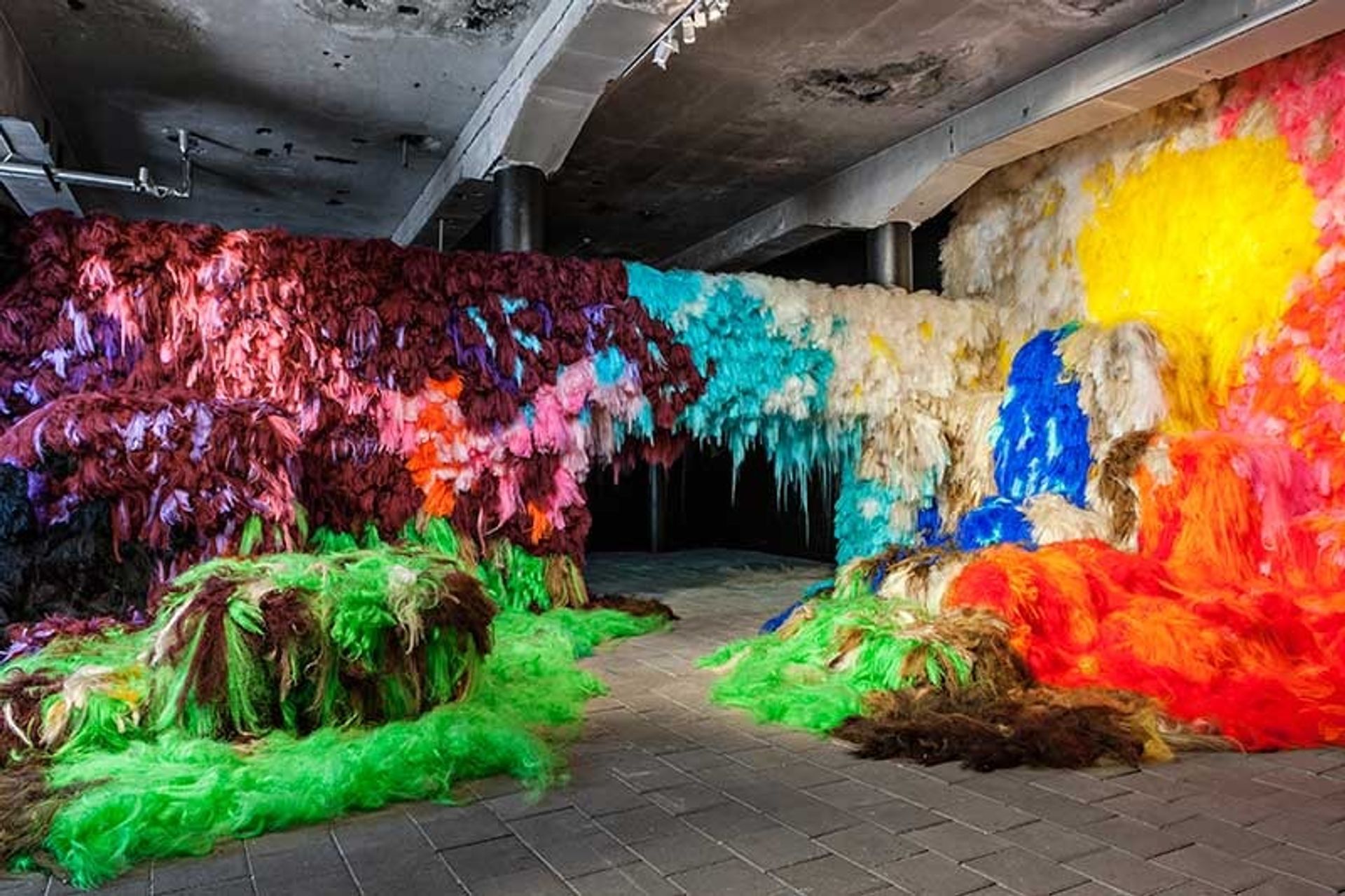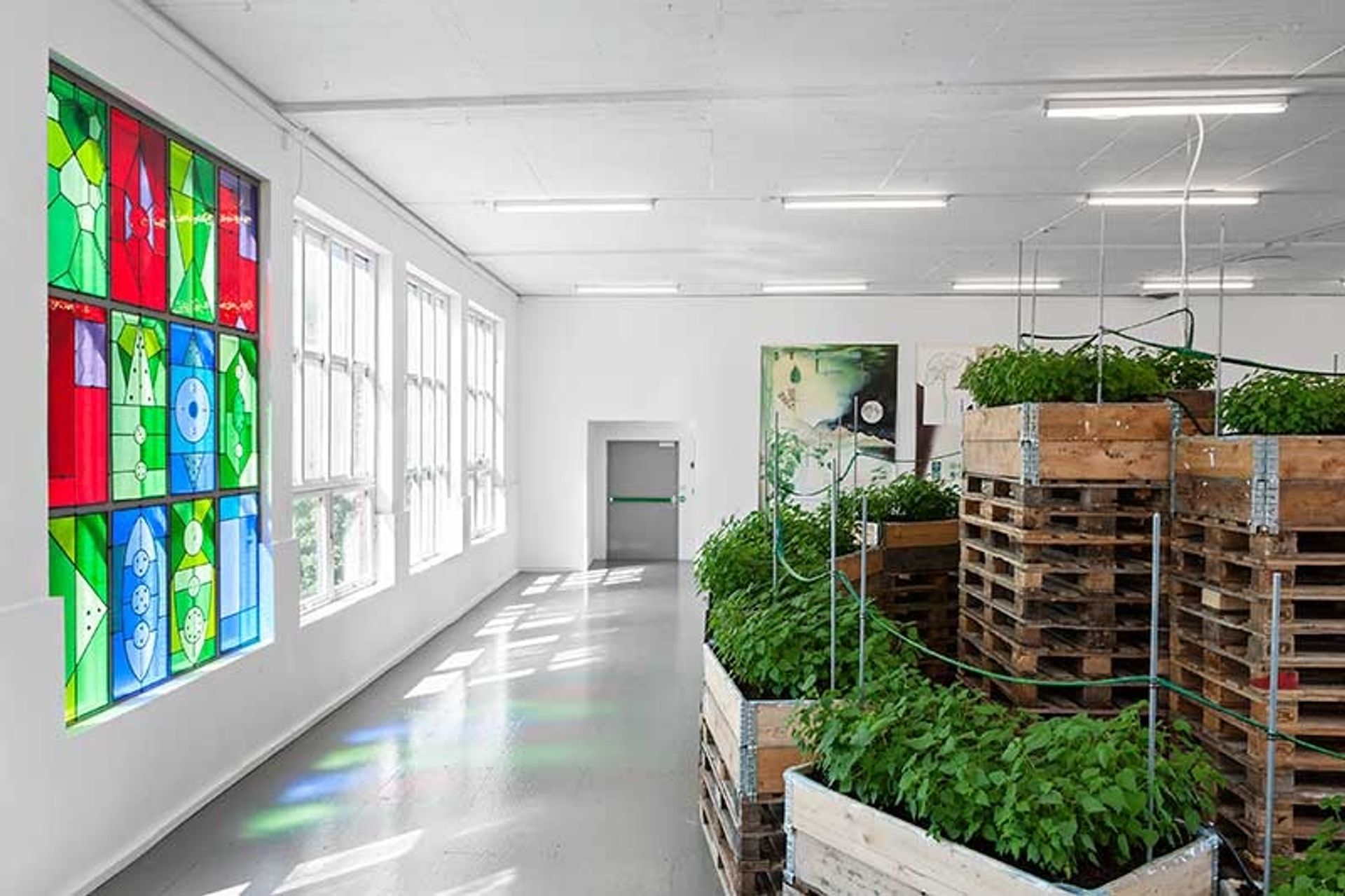This year’s eighth staging of Momentum, the Nordic Biennial of Contemporary Art, is the most ambitious yet, embracing performance, fine art, installations, video, sound, landscape art and cutting-edge technology to create what the organisers term a “wild, multi-sensory experience in an idyllic Norwegian setting.”
If the setting is idyllic (the sedate town of Moss, with a population of 30,000, is some 35 miles south of Oslo) this year’s theme, Tunnel Vision, is anything but. “Conspiracy theories, paranoia and altered states of mind” are the chief ingredients of an ambitious, two-venue show of 30 works (several of them commissioned) assembled on a total overall budget of NOK 8.5 million (£700,000). Around 20 artists, half of who are from Scandinavia (mostly from Sweden), are represented.
The main venue is the Momentum Kunsthalle, a disused, two-storey brick factory by the Oslo-Gothenburg train line, across from the fast-flowing Mosseelva River and near a nightmarish mural (disappointingly not part of the Biennial) painted last year by the British street artist Phlegm on the façade of a derelict papermill.

Momentum’s ingenious event logo—a hypnotic spiral formed around the figure 8, designed by Ariane Spanier—flutters above the gaping factory entrance, where visitors are immediately submerged in Fujiko Nakaya’s installation Glacial Fog (2015) in which vapour periodically gushes from tiny nozzles along the back wall as floor-level neons provide ghostly lighting and the mist thickens into a London pea-souper, complete with puddles underfoot—all to a pounding, shrieking soundtrack (it pursues you, even more loudly, into the toilets) by Zhala, a Swedish musician of Kurdish origin. The artist Hrafnhildur Arnardóttir (also known as Shoplifter) has a piece called Nervescape IV (2015), a giant installation of synthetic hair in the next hall, which looks as if a thousand cuddly toys have been rammed through the mincer to emerge as psychedelic wigs. Upstairs the noise-level is ramped up to manic proportions by the screeching wheels of Julius von Bismarck’s piece Jugendbewegung (2015), a Volkswagen Polo revolving on its own axis at breakneck speed.
Few shows grab the visitor so violently by the scruff of the neck, even if the curators struggle to solicit all six senses as they promise. Sight and sound are no problem, and touching certain walls activates Sissel Tolaas’s “smell molecules,” although their smell is hard to detect. Momentum skips taste altogether, but goes to town on our sixth sense: a blend of intuition, spiritual vision and paranoia.

The Moscow trio Valia Fetisov, Dzina Zhuk and Nicolay Spesivtsev have been commissioned to produce the paranoiapp, a smartphone app whose user can monitor a fellow-citizen’s every move. Johanna Heldebro’s photos of an apparently anonymous Swede getting paparazzi treatment (To Come With Reach Of You, 2009) is rather less disturbing than Jaanus Samma’s reconstructed life of a gay Estonian at this year’s Venice Biennale (Chairman’s Tale, 2015)—until you learn that Heldebro was stalking her estranged father.
The need to consult (and first track down) the texts needed to make sense of many Momentum works can be irksome. Christine Ödlund’s installation of two meticulous coloured drawings, one stained-glass window and a dozen wooden crates full of nettles looks intriguingly Kabakovian, but can only be fully appreciated once you learn it explores how nettles react to coloured light and (we have to take Ödlund’s word for this) communicate danger to each other chemically: nettle-noshing butterfly-larvae lurk in the crates.
Momentum’s second, smaller venue is an elegant 19th century manor-house, 3 miles outside Moss along a pastoral route known as Munch’s Way in honour of Norway’s most famous artist. He withdrew to Moss between 1913-16, in what Momentum curators insist was an early artistic example of tunnel vision.
Outside, Joanna Lombard has scorched a black circle by the house, between trees equipped with loud-speakers relaying endless laughter. Lombard recorded eight actors forcibly laughing for 45 minutes to produce an effect that transports visitors from their Norwegian idyll to a Khmer Rouge jungle camp.

Inside, Bjarni Thórarinsson’s fiddly geometric drawings exude the repetitive intricacy of Outsider Art—surely a paranoiac/tunnel vision field par excellence, yet surprisingly overlooked by Momentum 8. Minna Henriksson’s readiness to spy swastikas in anything from Belle Epoque railings to 1940s Finnish crosswords, inspired by her discovery of a large Nazi emblem on the back of a family painting, is another example of paranoia.
Daniel Steegmann, meanwhile, attacks tunnel vision with two powerful works inspired by the rainforest in his adopted Brazil. One (16 mm, 2008-11) is an hypnotic video, with a camera advancing in a straight line, almost imperceptibly, through apparently impenetrable jungle. The other, Phantom (2015), requires Oculus Rift goggles for a trip through virtual reality, immersed in an inextricable rainforest recreated using 3-D digital imagery designed by the UK firm ScanLAB. The schizophrenic contrast between total jungle immersion and the view from the upstairs window across trim lawns towards Oslo Fjord, is a Momentum highpoint.
Momentum 8 encompasses an artistic variety that reflects its unusually cosmopolitan curatorial team: Stefanie Hessler from Germany, Jonatan Habib Engqvist from Sweden, Birta Gudjonsdottir from Iceland and Toke Lykkeberg from Denmark. The quartet display a degree of lateral thinking that seems at odds with their stated devotion to tunnel vision, but there is no escaping the mood of paranoia that underpins the event in a way that is alternatively assertive and festeringly invasive. Few art biennials manage so successfully to challenge the intellect and simultaneously batter the senses.
Simon Hewitt is an art critic and photographer based in Geneva, Switzerland
Momentum 8, Moss, Norway, various locations, until 27 September

